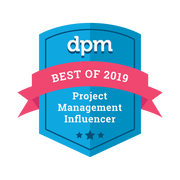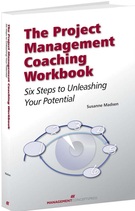But it doesn’t have to be that way. It’s possible to have a difficult conversation with someone and at the same time strengthen the relationship. Not long ago I had a challenging discussion with a colleague of mine, which ended up being a beautiful conversation. We had been co-delivering some workshops and felt that there were misunderstandings and friction between us at times. And so we decided to explore it. On the call we each explained what the situations were that triggered us, why that was and how it made us feel. We listened to each other with respect and without judgment. Our goal was to get to know each other better and to change our behaviour so that we would ultimately have a better working relationship. After thirty minutes on the call we were both filled with gratitude because we each felt understood.
When you’re about to interact with another person, and you would like to maintain or strengthen the connection between you, first come clear on your purpose for communicating with them. If you’re out to get them they will sense it and get hostile. You might not consciously want to blame a stakeholder who hasn't signed off on a document, but perhaps unconsciously you hold a grudge against them. They will sense that. So when you approach somebody make sure that your message is genuinely beneficial for the other person and that you are interested in the best outcome for both of you.
But there is more to it. Because even if you don’t in any way want to blame the stakeholder or the team member, you could still damage the relationship if you aren’t sensitive enough to their needs and their point of view. When you walk up to somebody, their brain will automatically judge you and assess if you are a threat to them or not. To maintain or strengthen the connection you need to be seen as a friend who they know, like and trust. Engage in an open conversation and choose your words carefully. It’s not what you say that matters but how they perceive your message. Show genuine interest for their needs and deeply listen to their side of the story. In fact you should listen so well, that you are able to express their needs and concerns just as well as they are. You don’t have to agree with the other person, but try to understand them.
Also bear in mind that people become difficult when their needs aren’t met. On a project, this could be a need for power, control, validation or perhaps certainty. If somebody appears negative, ask yourself what the underlying cause might be. There could be a very valid reason for their feelings. If you’re in doubt about somebody, assume that their need is to feel listened to, accepted and appreciated. That thought alone can transform your professional relationships.
Connecting with negative people
If you’re dealing with a negative stakeholder who is shooting down a good idea, make sure you ask them questions rather than bombarding them with statements. So instead of stating that you’re disappointed about their response and the consequences, ask them how they expect you to deal with a potential fallout. Also ask them how they would like you to explain the decision to the team and other impacted parties. In this way you are creating an imaginary scenario in their brain, which can be very powerful. Likewise, if a team member hasn’t completed their work on time, ask them how they suggest you explain that to the client. You can reinforce this by asking them how they think it feels to be in your situation. Allow the other person to step into your shoes. What you’re doing is that you are transferring your emotion to them and making yourself a human being in their eyes. But remember that you have to do it without blaming them or accusing them in order to maintain the connection between you.
Now, if a stakeholder or a team member is continually negative, try to use the black hat thinking technique where you deliberately ask them to come forward with their concerns. Say that what you need right now is for everybody to shoot holes in the idea you have put forward. This technique will address the fact that some people just need to be heard. If they mention something terribly negative, thank them and ask “what else?” You don’t want them to go down a rabbit hole of negativity. You’re simply creating a list of concerns. In a similar vein you can invite people to write down 10 reasons why a certain idea will fail. The really negative person probably won’t be able to come up with that many reasons.
There were a few other tips about to create connection that I picked up from the podcast. The first one is to look into people’s left eye, and to avoid important conversations just before lunch when people are hungry. If you’re communicating via email, finish it with the magic phrase “thanks in advance”. You can even include a smiley face after that. Apparently, it grabs people’s attention and will increase the likelihood of a positive and timely response.
If you liked this post, you may also like:
10 tips for handling conflict
Top Tips for Providing Effective Feedback
20 Essential Tips for Project Leaders
How to Wow Your Steering Committee
The Most Common Communication Mistakes Project Managers Make









 RSS Feed
RSS Feed